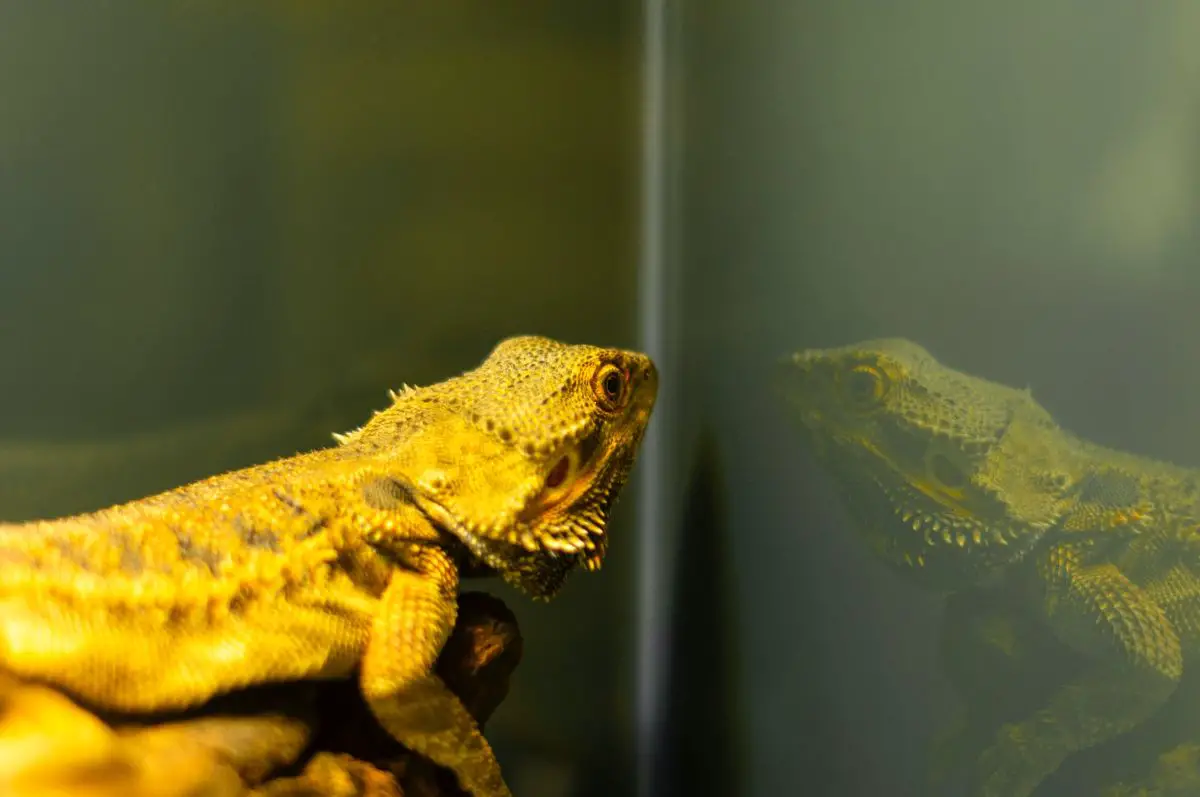Do Lizards Prefer Living Alone? Exploring the Social Behavior of Lizards
Lizards are fascinating creatures that come in a wide variety of shapes, sizes, and colors. They are known for their unique characteristics, such as their ability to change color and their long, sticky tongues. However, one question that often arises is whether lizards prefer to live alone or in groups.
While some lizard species are known to be social and live in groups, others prefer to live alone. For example, iguanas are social creatures that live in groups, while bearded dragons are solitary animals that prefer to live alone. This can depend on various factors, such as their natural habitat and their behavior patterns.
| Are these foods dangerous for your Beardie? | |
| Avacado? Click here to learn, from this guide, if this food is dangerous |  |
| Superworms? Click here to learn, from this guide, if this food is dangerous |  |
Understanding whether lizards prefer to live alone or in groups can be important for their care and well-being in captivity. By providing them with an appropriate living environment that meets their social needs, we can ensure that they thrive and live happy, healthy lives. In this article, we will explore the topic of whether lizards like to live alone and provide insights into their social behavior.
Lizard Social Behavior

A close-up of a lizard in a tank with its reflection showing.
Solitary vs. Social Species
Lizards have a diverse range of social behaviors. Some species prefer to live alone, while others are social and live in groups. The degree of sociality varies from species to species and can be influenced by various factors such as habitat, diet, and reproductive strategies.
Solitary species, such as the Gila monster, prefer to live alone and only interact with other lizards during the breeding season. They are territorial and defend their territory against other lizards. Solitary species tend to have larger home ranges compared to social species.
Social species, such as the green iguana, live in groups and interact with each other regularly. They may form hierarchies within the group, and individuals may have specific roles or duties. Social species tend to have smaller home ranges compared to solitary species.
Factors Influencing Social Preferences
Several factors can influence a lizard’s social preferences. Habitat plays a significant role in determining whether a species is solitary or social. Lizards living in open habitats, such as deserts, tend to be more solitary, while those living in forested areas tend to be more social.
Diet can also influence social behavior. Lizards that feed on abundant resources, such as insects or plants, may be more social, while those that feed on scarce resources, such as small vertebrates, may be more solitary.
Reproductive strategies can also affect social behavior. Species that have complex mating rituals or require group cooperation for successful reproduction may be more social. In contrast, species that have simple mating rituals or do not require group cooperation for successful reproduction may be more solitary.
In conclusion, lizard social behavior is diverse and influenced by various factors such as habitat, diet, and reproductive strategies. Some species prefer to live alone, while others are social and live in groups. Understanding these factors can provide insight into the evolution and ecology of lizard social behavior.
Habitat and Territory
Territoriality in Lizards
Lizards are known to be territorial animals. They mark their territories using various methods, including scent marking and visual displays. Some species of lizards are more territorial than others, and males are generally more territorial than females.
Territorial behavior in lizards is often related to mating and breeding. Male lizards will defend their territories from other males to protect their access to females. Females, on the other hand, will defend their territories to protect their nests and offspring.
Preferred Habitats
Lizards can be found in a wide range of habitats, including deserts, forests, grasslands, and wetlands. However, different species of lizards have different habitat preferences.
Some lizards prefer open, sunny habitats with plenty of rocks and other structures for basking and hiding. Others prefer more shaded habitats with plenty of vegetation for cover. Some species of lizards are arboreal, meaning they live in trees, while others are ground-dwelling.
It is important to provide lizards with a habitat that meets their specific needs in terms of temperature, humidity, lighting, and substrate. This will help them thrive and exhibit natural behaviors, including territoriality.
Interaction and Communication
Visual Signals
Lizards use visual signals to communicate with one another. They may engage in displays of aggression or submission, or use body language to convey a message. For example, a dominant lizard may puff out its chest and bob its head to indicate its dominance, while a submissive lizard may flatten its body and avoid eye contact.
Vocalizations and Sounds
While lizards are not known for their vocalizations, some species do make sounds to communicate with one another. For example, male anoles have a throat flap that they use to amplify their calls during mating season. Other lizards may hiss or make clicking sounds when threatened or alarmed.
Overall, while lizards may not be social creatures in the traditional sense, they do engage in communication and interaction with one another. Understanding these behaviors can help us better understand how lizards interact with their environment and with one another.